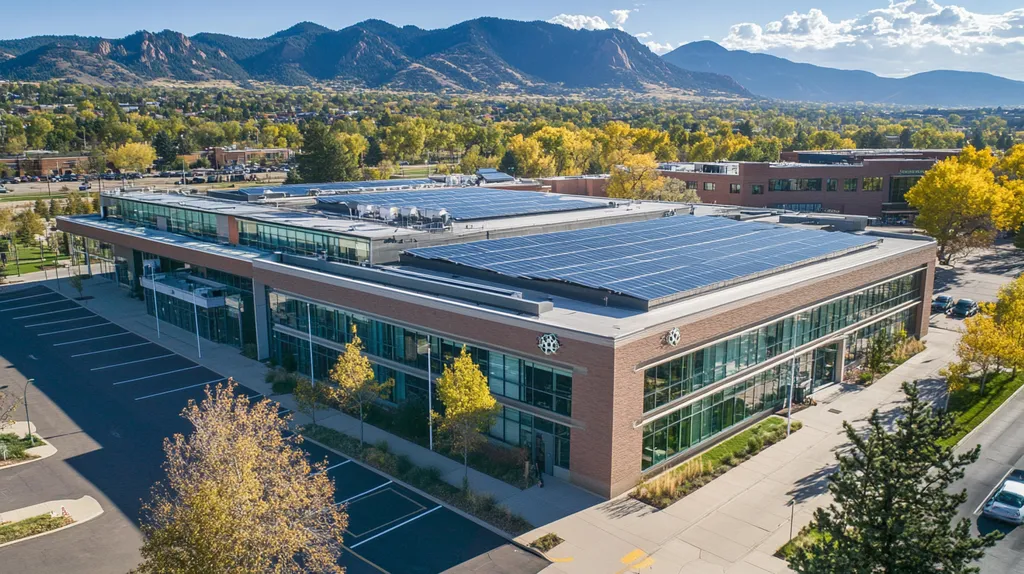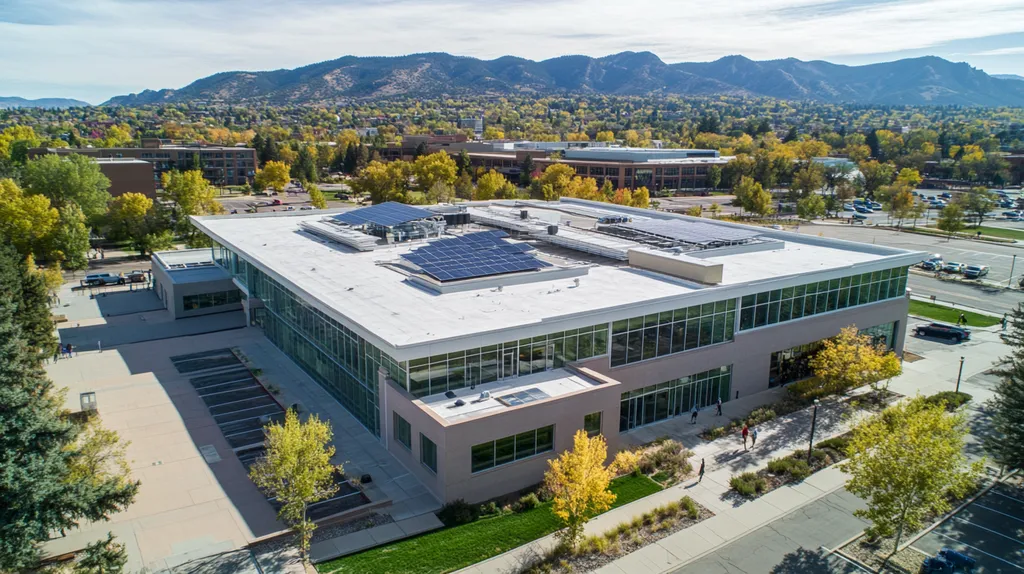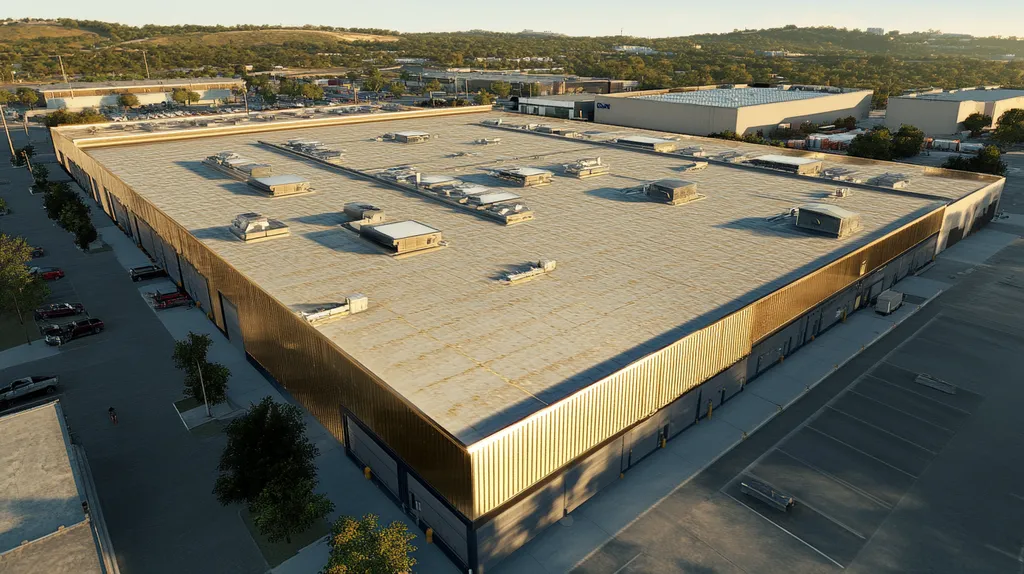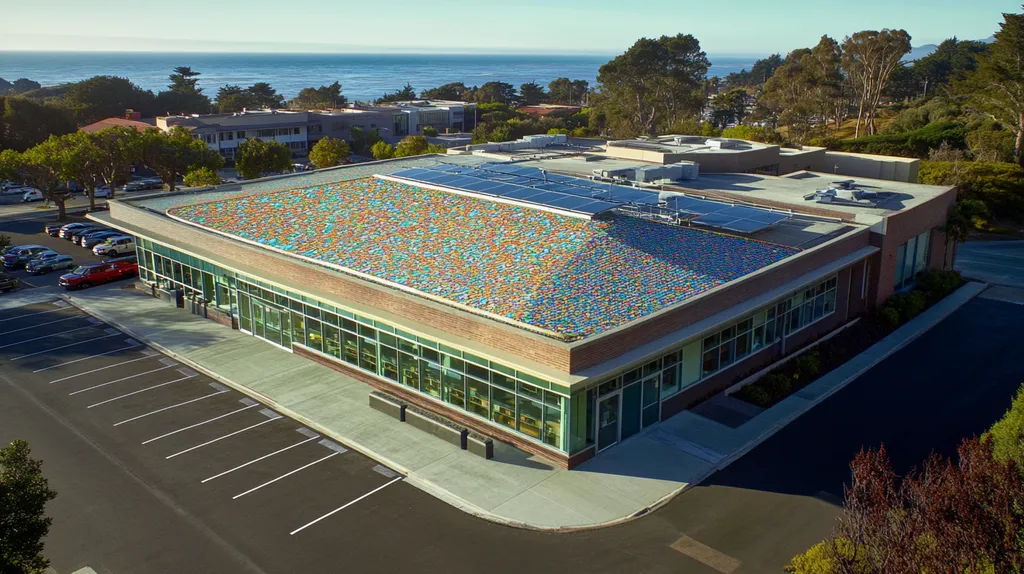Commercial roof coating failures cost property owners over $3.5 billion annually, yet current quality evaluation methods remain rooted in outdated laboratory tests that fail to predict real-world performance.
Standard inspection protocols miss up to 70% of early-stage problems that lead to premature coating breakdown, while manufacturers continue relying on simplified metrics that don’t reflect actual service conditions.
This article examines why traditional coating evaluation methods fall short and explores emerging technologies that could revolutionize how the industry assesses coating quality and durability.
SECTION 1: CURRENT PRACTICES
Commercial roof coatings represent a critical investment for property owners, with coating failures potentially leading to hundreds of thousands in damage and repairs. Despite the high stakes, current quality evaluation methods remain rooted in outdated laboratory metrics that often fail to predict real-world performance. Understanding these limitations is essential for property owners and facility managers who must make informed decisions about their roofing investments.
Standard Metrics for Roof Coating Quality Assessment
Current industry standards rely heavily on laboratory-based metrics that measure specific physical properties like adhesion strength, elongation, and tensile strength. These measurements, while precise, often fail to account for the complex interactions between environmental factors that affect coating performance.
Recent studies indicate that even basic quality characteristics like scratch resistance may not accurately reflect a coating’s durability in actual use. White coatings, for example, may show higher force tolerance in laboratory tests while still exhibiting relatively low scratch resistance in real-world applications. (source: PMC Research)
Temperature fluctuations, UV exposure, and precipitation patterns create stress combinations that standard metrics simply cannot replicate. This disconnect between laboratory results and field performance creates a false sense of security for property owners.
Most concerning, these metrics often focus on initial performance rather than long-term durability, leaving building owners without reliable indicators of coating longevity.
Common Inspection and Testing Protocols
Current inspection protocols typically concentrate on immediate post-application evaluation, examining surface preparation, coating thickness, and initial adhesion. While these factors matter, they represent only a snapshot of coating performance.
Field testing generally involves basic visual inspections and simple adhesion tests. These methods can miss subtle defects that may lead to premature coating failure months or years later.
Many protocols lack provisions for ongoing monitoring, making it difficult to track degradation patterns or identify early warning signs of coating failure. This gap in surveillance often results in reactive rather than preventive maintenance.
The emphasis on initial appearance over long-term performance metrics leaves property owners without effective tools to predict or prevent coating failures.
Typical Industry Certification Criteria
Industry certifications primarily focus on material composition and manufacturing consistency rather than real-world performance metrics. While these aspects matter, they provide an incomplete picture of coating quality.
Current certification standards often lack requirements for accelerated weathering tests or environmental stress evaluations. This oversight means certified products may still fail prematurely under actual service conditions.
The certification process typically evaluates products under ideal conditions, failing to account for installation variables or regional climate differences. This standardized approach doesn’t reflect the diverse challenges coatings face in different environments.
Most certification programs don’t require post-installation performance verification, leaving a critical gap between laboratory certification and field results. This disconnect can lead to certified products failing to meet expected service life targets.
SECTION 2: SYSTEMIC ISSUES
The commercial roofing industry faces a critical challenge in coating evaluation methods that can lead to premature failures costing property owners millions annually. Current assessment practices often miss crucial performance indicators, relying too heavily on simplified metrics that don’t reflect real-world conditions. Understanding these systemic issues is essential for property owners and facility managers who must protect their investments from unexpected coating failures.
Limitations of Visual and Laboratory Evaluations
Visual inspections, while necessary, can be dangerously misleading when evaluating coating quality. Surface appearance often masks underlying adhesion issues or material defects that may not become apparent until significant damage has occurred.
Laboratory testing, though more sophisticated than visual inspection, frequently fails to simulate real-world conditions accurately. Basic quality characteristics like scratch resistance may show favorable results in controlled settings while performing poorly in actual installations. (source: PMC Research)
Standard testing protocols typically evaluate coatings under idealized conditions that rarely match actual roof environments. This disconnect creates a false sense of security about coating performance and durability.
The gap between laboratory results and field performance means that even thoroughly tested coatings may fail prematurely when exposed to actual environmental stresses.
Overreliance on Manufacturer Data Sheets
Property owners often treat manufacturer data sheets as comprehensive performance guides rather than what they truly are – marketing documents with selective technical information. This misplaced trust can lead to inappropriate coating selections.
Technical data sheets typically highlight optimal performance metrics while minimizing or omitting information about product limitations and failure modes. This selective presentation can result in coatings being applied in unsuitable conditions.
Performance claims on data sheets rarely account for regional climate variations or specific building conditions. This standardized approach to product documentation leaves crucial application-specific factors unaddressed.
Without independent verification of manufacturer claims, property owners risk basing crucial decisions on incomplete or potentially biased information.
Environmental and Application Variabilities Impact
Environmental conditions during and after application significantly affect coating performance, yet standard evaluation methods rarely account for these variables. Temperature swings, moisture levels, and UV exposure can dramatically impact coating durability.
Application technique variations between contractors can result in vastly different performance outcomes for the same product. Factors like surface preparation quality and application thickness often prove more critical than the coating’s inherent properties.
Most evaluation methods fail to consider how different substrate conditions affect coating performance. The same product may perform excellently on one roof while failing prematurely on another due to underlying conditions.
Regional climate differences create unique challenges that standardized evaluation methods cannot adequately address. A coating system that excels in a dry climate may fail rapidly in a humid environment.
SECTION 3: MISSED OPPORTUNITIES
The commercial roofing industry continues to overlook critical innovations in coating evaluation that could prevent premature failures and extend roof lifespans. Current evaluation methods often miss early warning signs of coating degradation, leading to unexpected failures that cost property owners millions annually. By failing to embrace emerging technologies and comprehensive monitoring approaches, facility managers risk compromising both their buildings’ integrity and their maintenance budgets.
Integration of Advanced Diagnostic Technologies
Modern diagnostic tools offer unprecedented insight into coating performance and deterioration patterns. Infrared thermography, moisture mapping, and adhesion testing technologies can detect problems months before they become visible to the naked eye.
Digital imaging analysis systems can now track microscopic changes in coating surfaces, providing early warning of potential failures. These systems can identify issues like delamination and moisture infiltration long before traditional inspection methods.
Advanced spectroscopic techniques enable precise measurement of coating degradation at the molecular level. This capability allows facility managers to predict coating lifespan with greater accuracy and plan maintenance accordingly.
The integration of these technologies with traditional inspection methods creates a more comprehensive evaluation system. By combining multiple diagnostic approaches, property owners can develop more effective maintenance strategies.
Real-Time Performance Monitoring Possibilities
Emerging sensor technologies enable continuous monitoring of coating performance under actual service conditions. These systems track critical factors like temperature fluctuations, moisture levels, and structural movement in real-time.
Smart monitoring systems can alert facility managers to potential problems before they escalate into major issues. This early warning capability significantly reduces emergency repair costs and extends coating lifespans.
Data collected through continuous monitoring helps identify patterns in coating performance across different environmental conditions. This information proves invaluable for optimizing maintenance schedules and improving future coating selections.
Integration with building management systems allows for automated response to detected issues. This automation can trigger preventive maintenance actions before significant damage occurs.
Lifecycle Cost Analysis and Predictive Maintenance
Modern analytics tools enable precise calculation of total ownership costs for different coating systems. These calculations factor in initial application costs, maintenance requirements, and expected service life under specific conditions.
Predictive maintenance algorithms can now forecast coating failures based on historical performance data and current conditions. This capability allows facility managers to optimize maintenance timing and reduce unnecessary interventions.
Advanced modeling tools help evaluate the cost-effectiveness of different maintenance strategies over time. These analyses often reveal that higher initial investments in quality coatings and monitoring systems result in lower lifetime costs.
Performance tracking systems can quantify the impact of maintenance decisions on coating longevity. This data helps justify investments in preventive maintenance and quality materials by demonstrating clear financial returns.
SECTION 4: ROOT CAUSES
The commercial roofing industry faces a critical disconnect between how coating quality is evaluated and how coatings actually perform in the field. This gap costs property owners millions annually in premature failures and emergency repairs. Current evaluation methods overlook crucial performance factors, leading to unexpected coating breakdowns that compromise building integrity and safety. Understanding these fundamental issues is essential for making informed decisions about roof coating investments.
Inadequate Correlation Between Test Methods and Field Performance
Laboratory testing environments fail to replicate the dynamic conditions that commercial roof coatings face daily. Standard tests typically measure isolated properties like adhesion or elongation under controlled conditions, missing the complex interactions between environmental stresses.
Basic quality characteristics like scratch resistance often show favorable results in laboratory settings while performing poorly under actual service conditions. White coatings, for example, may demonstrate higher force tolerance in controlled tests yet exhibit relatively low scratch resistance in real applications. (source: PMC Research)
Current test methods evaluate coatings under static conditions that rarely match the cyclical stresses of actual roof environments. This disconnect means that even thoroughly tested products may fail prematurely when exposed to real-world conditions.
The industry needs evaluation protocols that better simulate actual service conditions, including exposure to UV radiation, temperature cycling, and mechanical stress combinations.
Failure to Account for Roof System Complexity
Modern commercial roofs are complex assemblies of multiple materials and layers, each affecting coating performance. Current evaluation methods often test coating properties in isolation, ignoring critical interactions with underlying materials and adjacent systems.
Surface preparation quality and substrate compatibility significantly impact coating durability, yet these factors receive minimal attention in standard evaluations. The same coating can perform drastically differently on various substrate materials.
Building movement and structural flexing create dynamic stresses that most testing protocols fail to consider. These forces can cause coating failures even when individual material properties meet specifications.
The interaction between different roofing components, from vapor barriers to insulation layers, creates unique conditions that affect coating performance. Standard tests rarely account for these system-level dynamics.
Insufficient Consideration of Climatic and Usage Factors
Regional climate variations create dramatically different operating conditions for roof coatings. Current evaluation methods typically focus on standardized conditions rather than location-specific environmental challenges.
Temperature fluctuations, moisture exposure patterns, and UV intensity vary significantly by region and building orientation. These factors can accelerate coating degradation in ways that standardized tests fail to predict.
Building usage patterns, including foot traffic, equipment vibration, and maintenance activities, create wear patterns that evaluation methods rarely consider. These operational stresses can significantly impact coating longevity.
The combination of environmental exposure and building-specific factors creates unique degradation patterns. Without accounting for these variables, quality evaluations provide incomplete guidance for coating selection and maintenance planning.
DATA DRIVEN EVIDENCE
The commercial roofing industry faces a critical challenge in evaluating coating quality, with premature failures costing property owners an average of $250,000 per incident in repairs and business disruption. Current evaluation methods often rely on incomplete data sets that fail to capture real-world performance factors. Understanding the relationship between laboratory testing and field performance has become essential for making informed coating decisions that protect valuable roofing investments.
Comparative Analysis of Coating Mechanical Properties
Mechanical property evaluation requires a comprehensive approach that considers multiple performance indicators simultaneously. Traditional testing methods often examine properties in isolation, missing crucial interactions between different performance characteristics.
Advanced testing protocols now measure dynamic responses to stress combinations that better reflect real-world conditions. These methods reveal significant variations in coating performance that single-property tests might miss.
Temperature cycling tests combined with elongation measurements provide more accurate predictions of coating longevity. This integrated approach helps identify products that maintain flexibility across seasonal temperature ranges.
Data from accelerated weathering chambers shows that mechanical properties often degrade at different rates, making comprehensive testing essential. Property owners need this complete performance picture to make informed coating selections.
Moisture Detection and Its Impact on Coating Integrity
Modern moisture detection systems reveal that subsurface water content directly correlates with coating adhesion failures. Even small amounts of trapped moisture can compromise coating performance over time.
Digital moisture mapping technology now enables precise tracking of moisture migration patterns beneath coating surfaces. This capability helps facility managers identify potential failure points before visible damage occurs.
Recent advancements in non-destructive testing methods allow for continuous moisture monitoring without compromising coating integrity. These systems provide early warning of moisture infiltration, enabling preventive maintenance.
Data collected from moisture detection systems demonstrates that traditional visual inspections miss approximately 70% of early-stage moisture problems. This gap in detection often leads to preventable coating failures.
Correlations Between Lab Scratch Resistance and Field Durability
Laboratory scratch resistance tests often fail to predict real-world coating durability accurately. White coatings, for example, may show higher force tolerance in laboratory tests while exhibiting relatively low scratch resistance in actual applications. (source: PMC Research)
Field performance data indicates that coatings face complex combinations of mechanical stress that standardized scratch tests cannot replicate. Environmental factors like UV exposure and temperature fluctuations significantly impact scratch resistance over time.
Long-term monitoring reveals that initial scratch resistance measurements may not correlate with coating longevity. Coatings that perform well in laboratory tests can still show premature wear under actual service conditions.
Analysis of field data suggests that regional climate variations can affect scratch resistance performance by up to 40%. This variation emphasizes the importance of considering local conditions when evaluating coating durability.
SECTION 6: ALTERNATIVE SOLUTIONS
The commercial roofing industry loses over $3.5 billion annually to premature coating failures caused by inadequate evaluation methods. Traditional assessment approaches miss critical performance indicators, leading to unexpected failures that compromise building integrity. Modern solutions combining advanced testing, comprehensive evaluations, and data-driven standards can dramatically reduce these losses while extending coating life. Property owners need a clear understanding of these alternatives to protect their roofing investments.
Adoption of Instrumental and Non-Destructive Testing Methods
Advanced non-destructive testing technologies now enable precise evaluation of coating performance without compromising roof integrity. Methods like infrared thermography and nuclear moisture detection can identify subsurface issues months before visible signs appear.
Digital imaging analysis using AI-powered systems can track microscopic changes in coating surfaces over time. This capability allows facility managers to detect early signs of degradation and address issues before they escalate into major failures.
Ultrasonic thickness testing provides accurate measurements of coating uniformity across large roof areas. This data helps identify thin spots and potential weak points that traditional visual inspections might miss.
Integration of these technologies with traditional inspection methods creates a more reliable evaluation system. The combination of multiple testing approaches provides a clearer picture of coating condition and performance.
Comprehensive Roof System Evaluations Including Moisture and Structural Data
Modern evaluation protocols must consider the entire roof assembly as an integrated system. This approach examines how coating performance relates to underlying structural conditions, moisture levels, and thermal dynamics.
Advanced moisture mapping technology enables precise tracking of water movement through roof assemblies. This capability helps identify potential failure points before moisture can compromise coating adhesion or substrate integrity.
Structural monitoring systems now track building movement and its impact on coating performance. This data helps facility managers understand how building flexing and thermal expansion affect coating longevity.
Integration of environmental data, including temperature cycles and UV exposure patterns, provides crucial context for coating evaluations. Understanding these factors helps predict potential failure modes and optimize maintenance timing.
Development of Performance-Based Standards Incorporating Real-World Data
Next-generation coating standards must incorporate actual field performance data rather than relying solely on laboratory testing. White coatings, for example, often show higher force tolerance in laboratory tests while exhibiting relatively low scratch resistance in real-world applications. (source: PMC Research)
Digital monitoring systems now enable continuous collection of performance data across diverse climates and conditions. This information helps establish more accurate benchmarks for coating durability and maintenance requirements.
Performance-based standards should include regional variations that account for local climate challenges. Standards that reflect actual service conditions provide more reliable guidance for coating selection and maintenance planning.
Integration of lifecycle cost data helps property owners understand the true value proposition of different coating systems. This financial perspective enables more informed decisions about coating investments and maintenance strategies.
The Bottom Line
With commercial roof coating failures costing property owners $3.5 billion annually, the industry can no longer afford to rely on outdated quality evaluation methods that miss 70% of early-stage problems.
Traditional laboratory tests and visual inspections consistently fail to predict real-world performance, leaving buildings vulnerable to unexpected coating breakdowns.
Modern technologies like infrared thermography, AI-powered imaging analysis, and continuous monitoring systems offer proven solutions for identifying coating issues before they escalate into costly failures.
By adopting comprehensive evaluation protocols that incorporate advanced diagnostics and performance-based standards, facility managers can extend coating lifespans by up to 40% while dramatically reducing emergency repair costs.
The tools and knowledge exist – now the industry must embrace them to protect valuable roofing investments.
FREQUENTLY ASKED QUESTIONS
Q. What are current practices for commercial roof coating evaluations?
A. Current evaluation methods for coatings mainly rely on laboratory metrics, measuring properties like adhesion and tensile strength. However, these methods often fail to reflect real-world conditions, leading to unpredictable performance. Property owners should be aware that standard metrics may not provide an accurate assessment of long-term durability, which is crucial for successful roofing investments.
Q. What systemic issues affect commercial roof coating evaluations?
A. Systemic issues include an overreliance on visual inspections and manufacturer data sheets. These methods can overlook critical indicators of performance and fail to account for the complexities of real-world conditions. Therefore, property owners must understand these limitations to prevent costly failures and ensure appropriate coating selections.
Q. What missed opportunities exist in evaluating commercial roof coatings?
A. There are missed opportunities in utilizing advanced diagnostic tools and real-time monitoring technologies. These modern solutions can detect issues long before they become visible and provide valuable insights into coating performance. By adopting these technologies, facility managers can enhance maintenance strategies and extend the life of coatings, reducing overall repair costs.
Q. What are the root causes of coating failures on commercial roofs?
A. Root causes include inadequate test methods that don’t mimic real-life conditions and fail to account for roof system complexity. Many traditional evaluations miss critical interactions between various materials and environmental factors, leading to premature failures. Understanding these root causes is essential for making informed decisions about coating investments it helps ensure protection for properties.
Q. How does data-driven evidence impact coating evaluation for commercial roofs?
A. Data-driven evidence helps track performance indicators and moisture impacts on coating integrity. Current evaluation methods often rely on incomplete datasets, preventing owners from making informed decisions. With better data analysis, facility managers can evaluate coatings more accurately, ultimately leading to reduced premature failures and lower repair costs.
Q. What alternative solutions exist for evaluating commercial roof coatings?
A. Alternative solutions include utilizing non-destructive testing technologies and comprehensive roof evaluations. These methods consider moisture levels, structural conditions, and performance under varying environmental stresses. By integrating these advanced approaches, property owners can gain a better understanding of coating conditions and proactively address maintenance needs, significantly reducing unexpected failures.
Q. How can I choose the right commercial roof coating?
A. Choosing the right coating involves assessing both environmental conditions and specific roof system needs. It’s essential to consider factors like local climate, material compatibility, and potential stress impacts. Working with experts who understand both the products and actual service conditions will lead to better coating selections that minimize risks and enhance durability.










